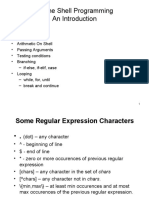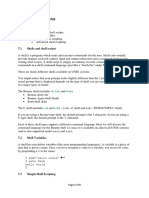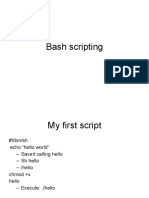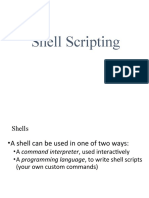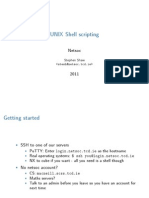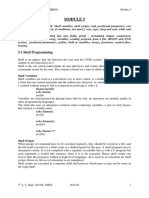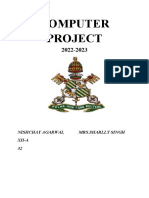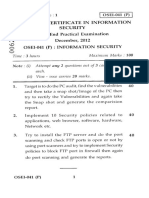0% found this document useful (0 votes)
76 views15 pagesLinux Systems Administration Shell Scripting Basics Mike Jager Network Startup Resource Center Mike - Jager@synack - Co.nz
This document provides an introduction to shell scripting basics in Linux systems administration. It covers why shell scripting is useful, especially for scheduled tasks and repetitive sequences. It also discusses when not to use shell scripting, such as for resource-intensive or proprietary tasks. The document then demonstrates shell scripting concepts like variables, conditionals, loops, and includes sample scripts. It also briefly introduces writing "Hello World" programs in C for comparison to shell scripts.
Uploaded by
Ricky LynsonCopyright
© © All Rights Reserved
We take content rights seriously. If you suspect this is your content, claim it here.
Available Formats
Download as PDF, TXT or read online on Scribd
0% found this document useful (0 votes)
76 views15 pagesLinux Systems Administration Shell Scripting Basics Mike Jager Network Startup Resource Center Mike - Jager@synack - Co.nz
This document provides an introduction to shell scripting basics in Linux systems administration. It covers why shell scripting is useful, especially for scheduled tasks and repetitive sequences. It also discusses when not to use shell scripting, such as for resource-intensive or proprietary tasks. The document then demonstrates shell scripting concepts like variables, conditionals, loops, and includes sample scripts. It also briefly introduces writing "Hello World" programs in C for comparison to shell scripts.
Uploaded by
Ricky LynsonCopyright
© © All Rights Reserved
We take content rights seriously. If you suspect this is your content, claim it here.
Available Formats
Download as PDF, TXT or read online on Scribd
/ 15



















